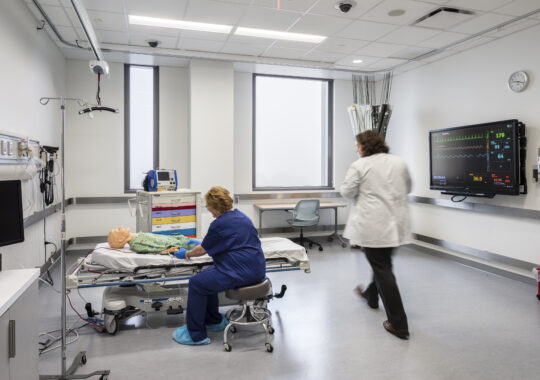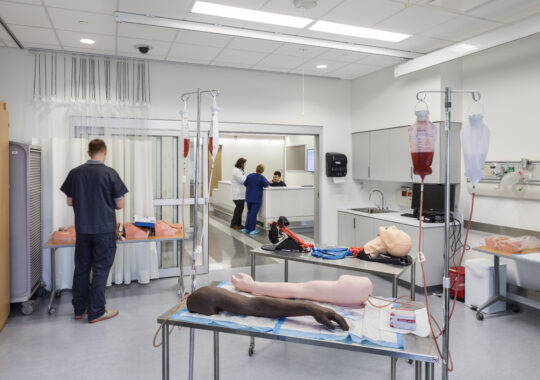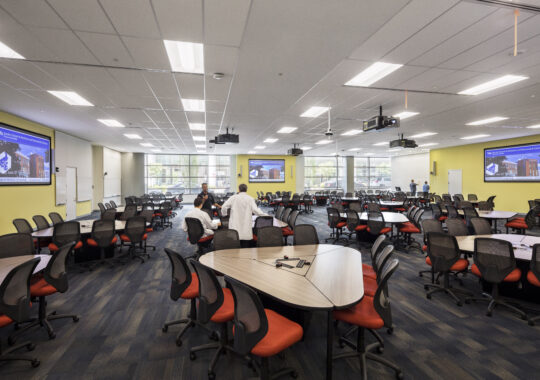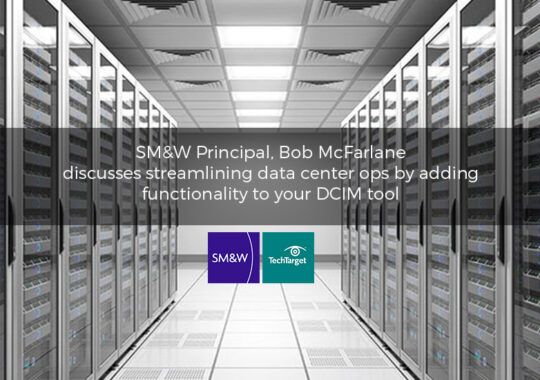As more and more product manufacturers and AV integrators move towards AVoIP network solutions, IP convergence on the enterprise network becomes the topic of almost every AV/IT design programming discussion. Should we put the AV devices on the network to provide consolidated management, infrastructure cost savings and a single point of support? Should we create separate networks to maintain clear lines of demarcation between IT/AV applications and network management?
Up until very recently, encoding and streaming on most IP networks involved encoders with bandwidth requirements typically not exceeding 15Mbps for HD 1080P resolution. These HD IP video/audio streams were not intended to completely replace DVI, HDMI, or SDI wired video connectivity. Standard production gigabit networks could easily support this type of streaming traffic if careful protocol selection and network configurations were integrated into the network architecture.
Today, it is still very common for most enterprise networks to have at best gigabit ethernet connectivity to the access layer or workstation/end-user locations. This is true in education, healthcare, corporate and even government networks. This is a major obstacle for integrating 4K video/audio devices on the production network as AVoIP technologies have some very stringent transport, bandwidth and timing requirements. With UHD 4K 4:4:4 60HZ resolutions taking center stage in the last couple of years, it became obvious that gigabit networks are generally not capable of passing this level of traffic without substantial compression as the defacto standard for high bandwidth UHD resolution network video distribution is currently a 10-gigabit network.
It is very difficult to request 10-gigabit switches and infrastructure from the facility IT department when it is rarely deployed on their production network. In our experience, the best solution for AV designers and integrators is to create a separate 10-gigabit parallel network that will utilize as much of the existing infrastructure pathways/spaces as possible. Having the ability to control protocol selection and network configurations provides a very effective means to ensure consistent traffic flow and bandwidth utilization. This approach can also circumvent complex security and policy constraints as the network is not available for general access and typically does not have the same security requirements. There are instances when IT would like to see the parallel network visible on their network management console. This can be addressed with a relatively simple link configuration which will allow IT to monitor the AV networks health, uptime/downtime along with the production network.
In the next few years, AVoIP devices will begin to be integrated on to AV wireless 802.11ax WiFi and cellular 5G networks which will provide high bandwidth and extremely low latency. This will usher in the new era of mixed reality and tactile devices that will have an immense impact on AV systems. The vision of converged networks may have its place someday when the demands for the enterprise production network are in step with the demands for the AV network. Until that time comes, creating purpose-built AV parallel networks appears to be the best direction.
This article was published in Sound & Communication Magazine: ViewPoint
Learn more about the Author: Brian Moores, Associate Principal
Click images to enlarge:













































